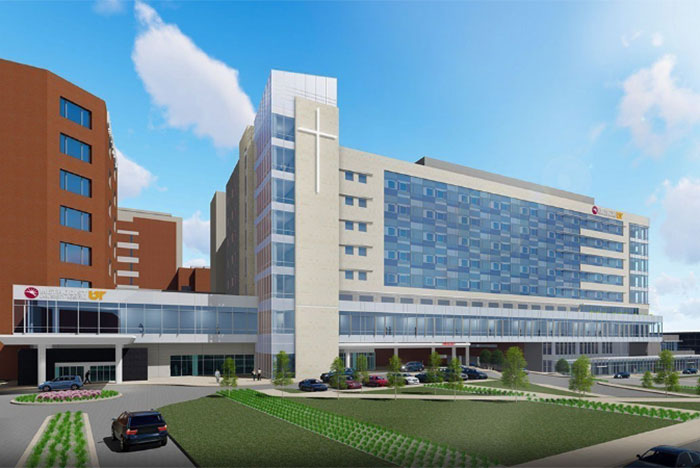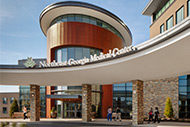
Methodist Healthcare is investing in state-of-the-art technology as it builds out its new patient tower.
Integration and connectivity between technology systems is becoming the norm in new health care facilities. The ability to have systems “speak” to one another while absorbing and reacting to data is seen as another piece to improving health care efficiency, and one that Methodist Healthcare plans to fully take advantage of with the building of its new flagship facility, Methodist University Hospital in Memphis. Tenn.
The construction will add 440,000 square feet to the hospital's campus and includes a new nine-story patient tower to be constructed as an overbuild on top of the existing emergency department without disrupting hospital activity. Construction of the new patient tower is expected to begin in January and be completed in the spring of 2019. HKS is the architectural firm on the project.
Of the $280 million project, nearly $13 million is dedicated to technology integration with Johnson Controls serving as the single point of responsibility for all of the hospital’s low-voltage systems. That includes technologies such as audiovisual and teleconferencing, data and communications cabling, fiber-optic backbone, emergency management radio, wired and wireless Local Area Network hardware, master clock and elapsed timer systems, nurse call system, overhead paging system, security systems, telephony/Voice over Internet Protocol systems, TV and patient entertainment, smart patient rooms and whiteboards, and a host of other systems.
“There are so many systems where it is critical to have a reliable infrastructure,” says Richard Kelley, director of corporate facilities management at Methodist Healthcare. “Fiber-optic lines, access points, data closets — it’s not really the sexy tech you hear about, but so much is driven by it. In today’s modern era where physicians rely on these for clinical processes, such as connecting to an electronic medical record, we have a responsibility in regard to infrastructure to keep up with that when they are trying to connect.”
Given the complexity of today’s systems, opting for a technology contracting model can typically lower first costs by 8 to 12 percent by avoiding duplication of infrastructure and systems. Over the long term, Matthew Hatten, account executive for major projects at Johnson Controls says the up-front planning can help to decrease operational and utility expenses by 10 to 15 percent.
“Our industry’s traditional approach to planning, designing and delivering technology has become obsolete in today’s world of “connected” devices, equipment, and systems — attempting to do this in silos has often provided results that were less than desirable,” Hatten says.
Kelley says the intended outcome for this project is a technologically advanced, iconic medical center, and those working on the project are scouring through the endless systems that can help to achieve that. Even something as detailed as a nurse call system that pings the exact nurse caring for the patient when he or she wants a glass of water, and tracks and records how long it takes for a nurse to respond can be used as a metric to track patient satisfaction.
“We are investigating technology that touches the patient experience side,” he says. “There’s a lot out there and we just started the process, so we’re not sure where we are going yet, but we have to make sure we have the right infrastructure in place for whatever path we decide to take.”





